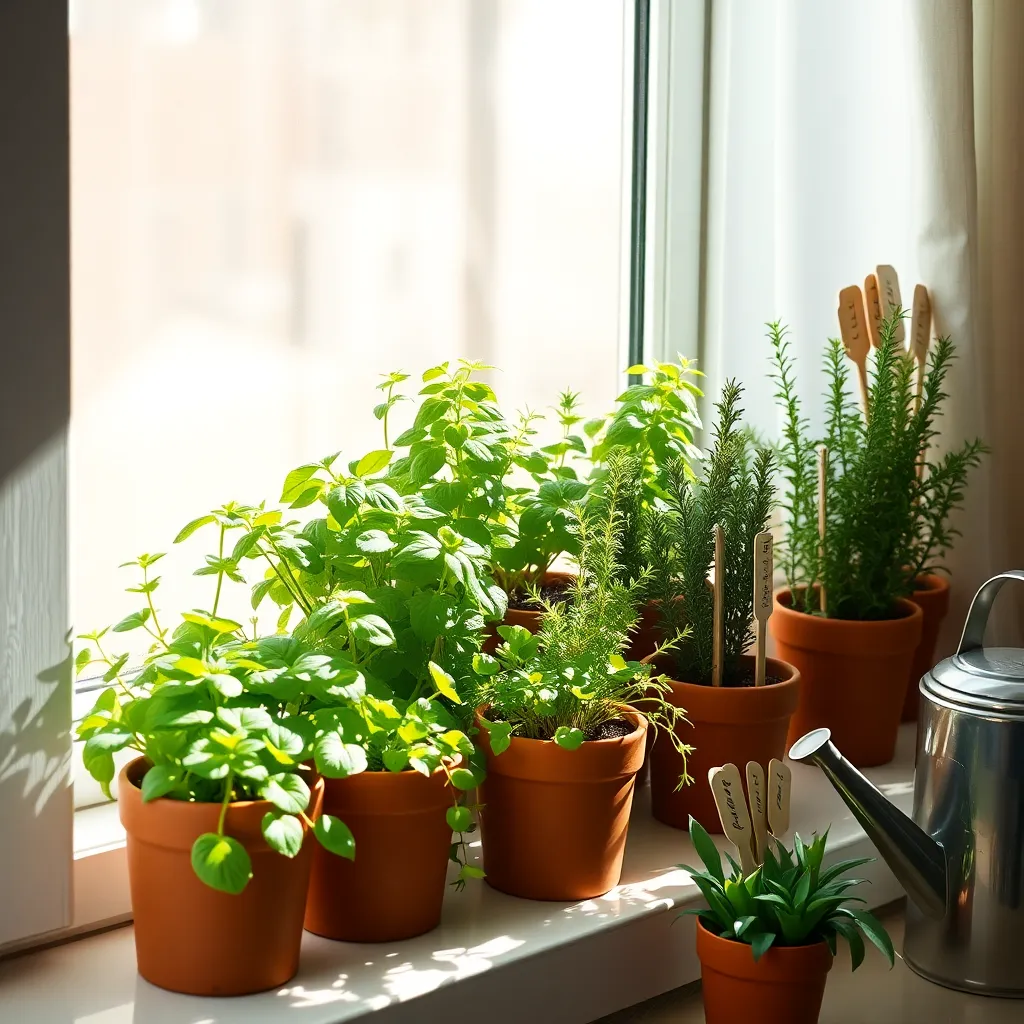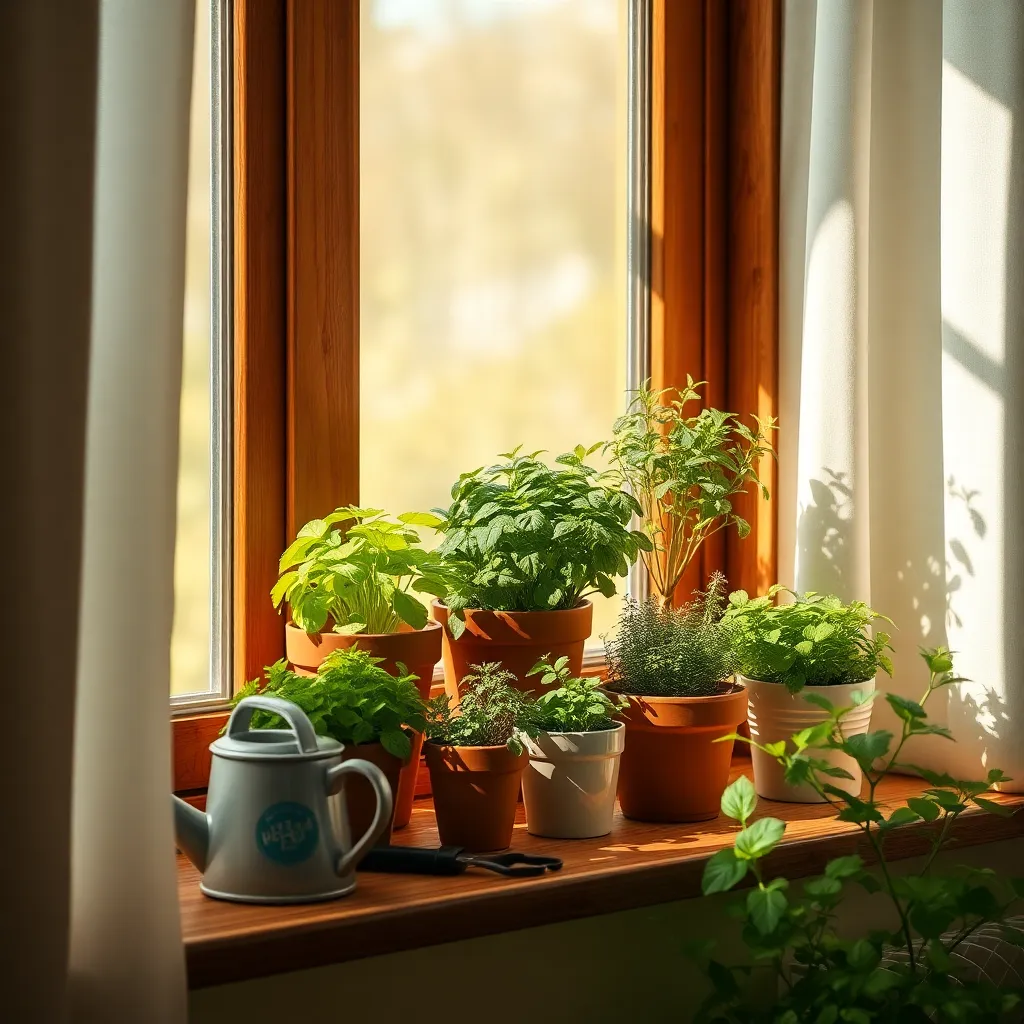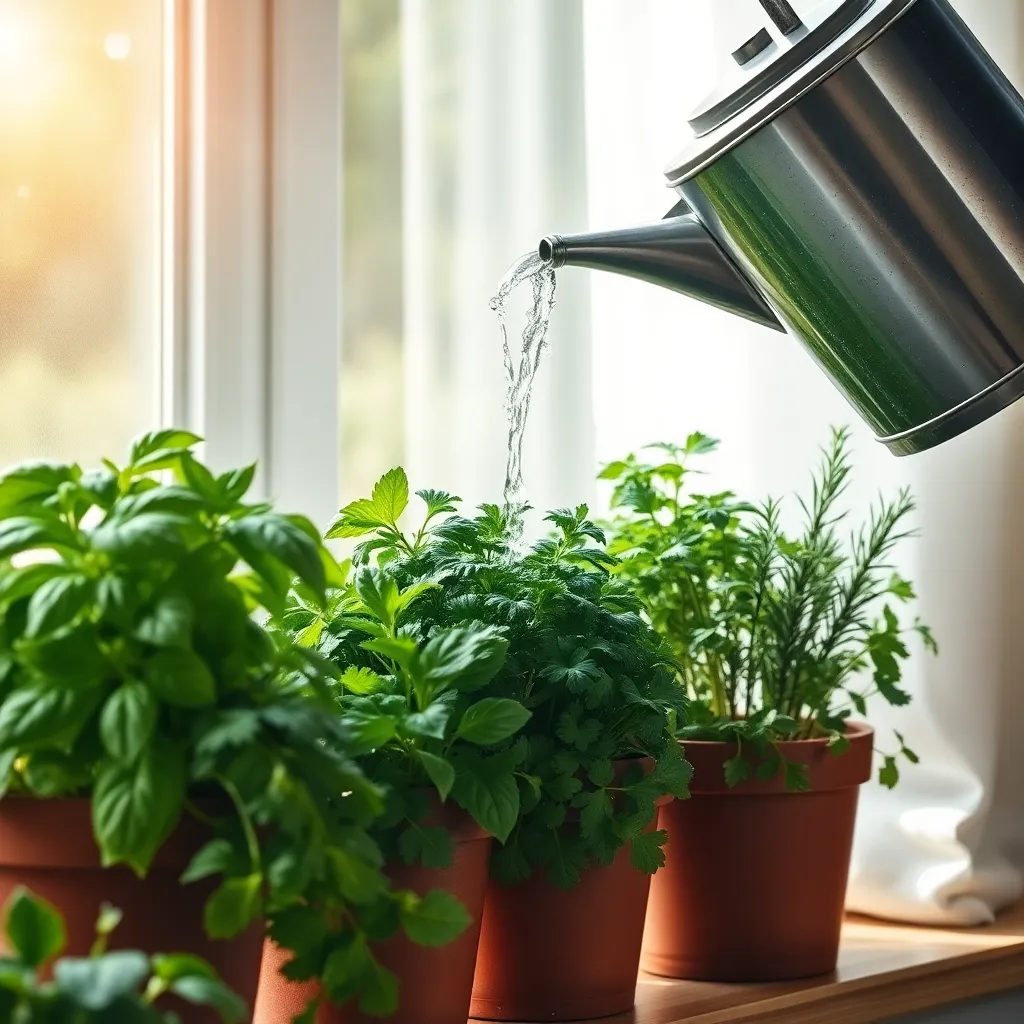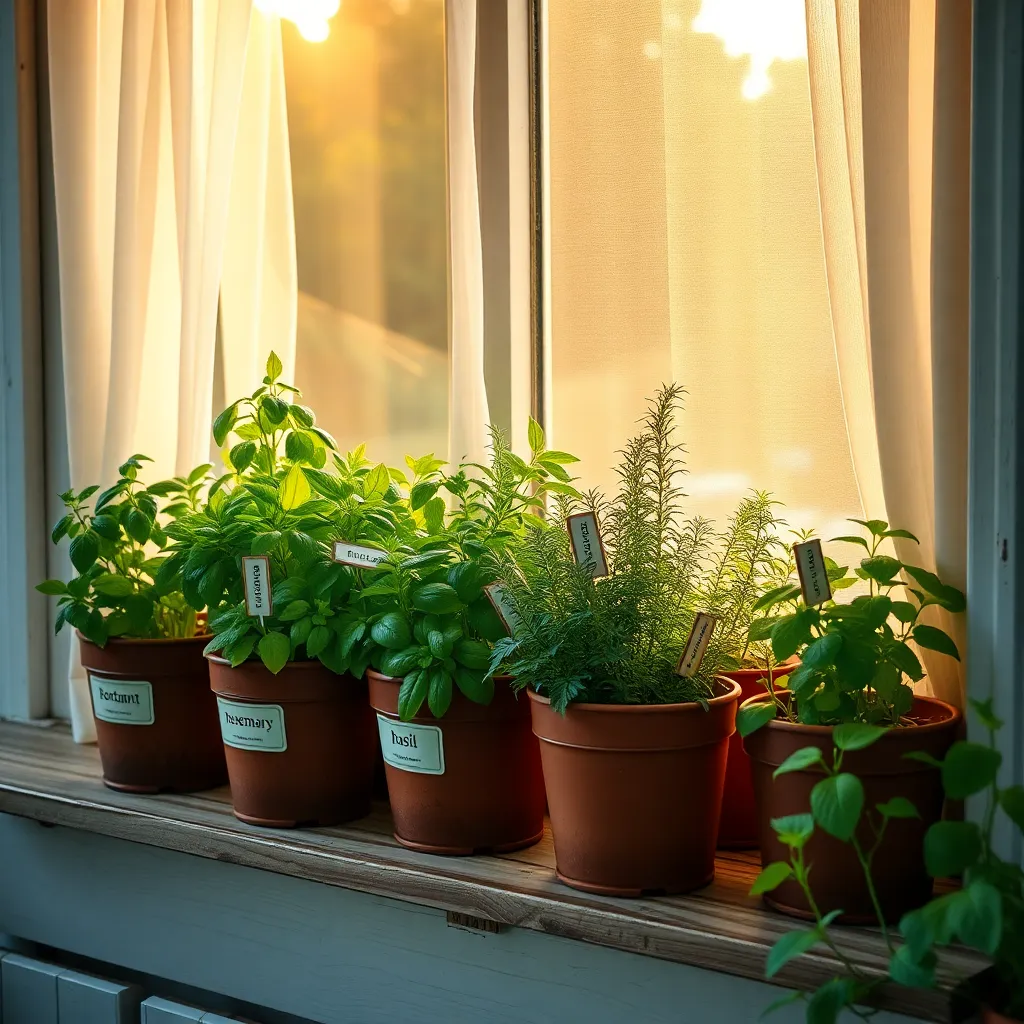Welcome to the enchanting world of indoor herb gardening, where the joys of nature and the comforts of home blend seamlessly to create a thriving green sanctuary right on your windowsill. Whether you’re a beginner taking your first steps into the lush realm of gardening or a seasoned green thumb looking to expand your indoor repertoire, this guide is your gateway to cultivating a vibrant herb garden that will delight your senses and elevate your culinary creations.
In this practical gardening guide, you’ll discover an array of design tips that are not only easy to implement but also tailored to maximize the success of your indoor herb ventures. With our expert insights, you’ll learn how to transform even the smallest spaces into flourishing herb havens, while reaping the rewards of fresh flavors and fragrant aromas right at your fingertips. Embrace the confidence that comes with knowing you have the tools and techniques to nurture your plants into thriving success stories, all within the cozy confines of your home.
Choose Sunniest Windowsill Location

To ensure your herbs thrive indoors, it’s essential to place them on the sunniest windowsill you can find. Ideally, choose a south or southwest-facing window, as it provides the most consistent sunlight throughout the day.
Consider the specific light needs of your herbs when selecting a location. Most herbs require at least six hours of sunlight daily, so a bright spot is crucial for their growth and flavor development.
If your available windowsill doesn’t get enough light, consider supplementing with grow lights. These lights can mimic natural sunlight and ensure your herbs receive the necessary light intensity, especially during darker months.
For those with limited sun exposure, positioning mirrors or reflective surfaces behind plants can help maximize available light. Reflective surfaces bounce light back onto the plants, improving their growth conditions in less than ideal spaces.
Select Compact Herb Varieties

Choosing compact herb varieties is essential for indoor gardening success, especially if you’re working with limited space. These smaller plants are perfect for windowsills and can thrive in containers, making them ideal for an indoor setting.
Consider growing dwarf basil varieties like ‘Spicy Bush’ or ‘Minette’, which stay small and bushy. They require regular watering but make sure to allow the top inch of soil to dry out between waterings to prevent root rot.
Another great option is ‘Compact Oregano’, which offers a flavorful punch without taking up much room. This herb prefers well-draining soil and benefits from being trimmed regularly to encourage bushy growth.
Chives are an excellent compact choice that adapts well to indoor environments. Ensure they receive plenty of sunlight and water them when the soil feels dry to the touch, keeping the leaves vibrant and flavorful.
For advanced gardeners, consider experimenting with compact cilantro varieties like ‘Calypso’. These need consistent moisture but appreciate slightly cooler conditions, so they may thrive on a north-facing windowsill.
Use a potting mix designed for herbs or a homemade blend of equal parts peat, perlite, and vermiculite. This will ensure adequate drainage and nutrient retention, supporting healthy plant growth.
Use Nutrient-Rich Potting Soil

When starting an indoor herb garden, using nutrient-rich potting soil is essential for healthy plant growth. Choose a high-quality potting mix that contains organic matter, such as compost or peat moss, which helps retain moisture and provides essential nutrients.
In addition to organic matter, ensure the potting soil includes ingredients like perlite or vermiculite, which improve aeration and drainage. These components prevent waterlogging, a common issue in container gardening that can lead to root rot in herbs.
Consider blending your own potting mix if you’re an experienced gardener looking for a custom solution. A basic recipe could include one part compost, one part coconut coir, and one part perlite to create a balanced medium with the right moisture retention and drainage.
For those new to indoor gardening, ready-to-use potting mixes specifically formulated for herbs are widely available and convenient. Look for options labeled as organic and enriched with slow-release fertilizers, which support sustained growth over time.
Water Consistently, Avoid Overwatering

Consistent watering is crucial for the success of your indoor herb garden. Herbs thrive best when they receive water evenly without extremes of dryness or saturation. Aim to water your herbs when the top inch of soil feels dry to the touch. This method helps ensure that the roots get the moisture they need without being waterlogged.
Overwatering is a common mistake that can lead to root rot and other issues. To avoid this, consider using pots with drainage holes, which allow excess water to escape, preventing soggy soil. Additionally, placing a saucer under each pot can help catch any runoff, protecting your surfaces.
For those who want to take their watering skills to the next level, consider using a moisture meter to gauge soil moisture accurately. These handy tools can provide a more precise reading than the finger test, especially for deeper pots. Remember, different herbs have varying water needs; for example, Mediterranean herbs like rosemary prefer drier conditions.
Monitoring the humidity and temperature can also impact your watering schedule. Indoor environments tend to be drier, especially in winter, which may require more frequent watering. Conversely, during humid summer months, you might need to water less often, adapting to the changing conditions.
Rotate Pots for Even Growth

To promote even growth in your indoor herb garden, it’s essential to rotate your pots regularly. This simple practice ensures that all sides of the plant receive equal sunlight, preventing uneven growth and lopsided plants.
Begin by marking one side of each pot with a small sticker or a piece of tape. This will help you remember to rotate the pot by a quarter turn every week, ensuring balanced exposure to light.
In addition to promoting symmetry, rotating your pots can help prevent certain pests and diseases. When plants are consistently exposed to varying light conditions, it helps them develop stronger, more resilient structures.
For those new to gardening, this may seem like a minor task, but its benefits are significant. Advanced gardeners might also consider adjusting the frequency of rotation based on specific plant growth patterns, particularly for faster-growing herbs like basil and mint.
Conclusion: Growing Success with These Plants
As you embark on the delightful journey of starting an indoor herb garden, remember the five key relationship concepts that can blossom alongside your plants: communication, patience, nurturing, shared goals, and growth. Just as herbs require the right environment to thrive, so too do relationships need open dialogue and understanding. Patience allows both your garden and your partnership to develop naturally, while nurturing fosters a supportive atmosphere that encourages flourishing. Setting shared goals with your partner, like harvesting your first basil leaves, can strengthen your bond and provide a sense of accomplishment. Finally, embracing growth—both in your garden and relationship—ensures that you continue evolving together.
To take immediate action, why not start by selecting a few herbs to plant and discuss how you can incorporate them into meals you cook together? This shared activity can reinforce your connection and provide a tangible reminder of your collaborative efforts.
Bookmark this article now so that you can revisit these insights as your relationship and garden grow. By cultivating these principles, you are sowing the seeds for a successful, thriving partnership. Remember, every small step taken today is a stride towards a more fulfilling future together.

